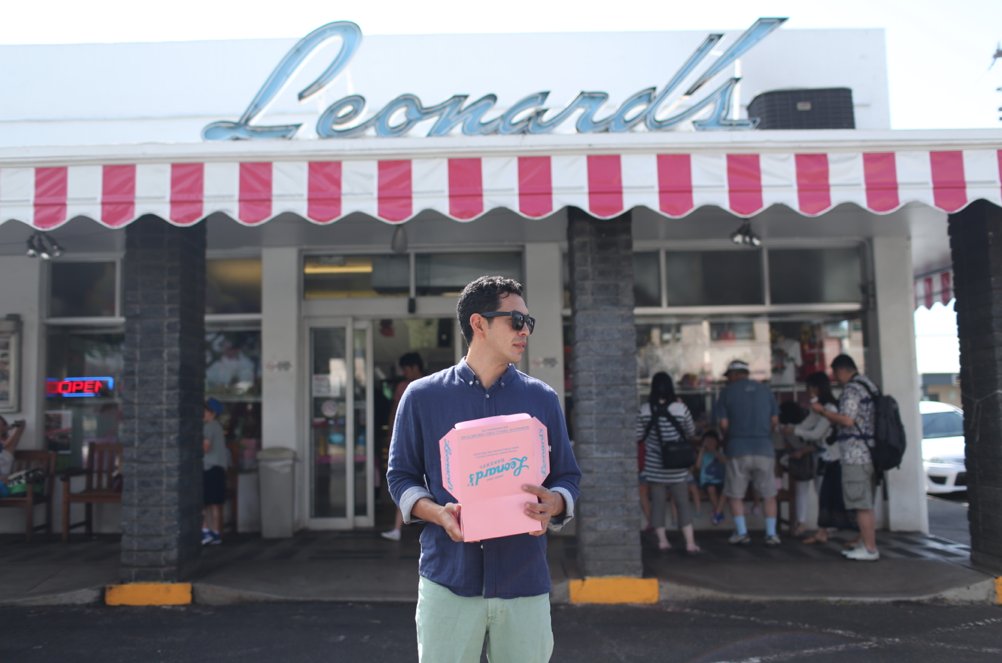Experience a whole history of Hawai‘i with these local favorite foods.
Text by Kelli Gratz & Lisa Yamada
Images by Melanie Tjoeng
As most guests and residents of a city will tell you, the best way to get a true understanding of a place is through its food. This is especially true of Hawai‘i, where the cuisine is as diverse and rich as its historical legacy. When voyagers from the South Pacific arrived in Hawai‘i more than 1,500 years ago, the food they brought with them forged the beginnings of what we know today as traditional Hawaiian food. Fish, shellfish, seaweed, taro, and breadfruit became staples.
Years later, immigrant workers from around the world flocked to Hawai‘i during the Plantation Era in search of opportunity and better living. Chinese were the first laborers to Hawai‘i, followed by Japanese, Filipinos, Koreans, and Portuguese.
After days of working in the plantation fields, communal meals were shared among these ethnic groups; Chinese dim sum and stir fry, Japanese bento and tempura, Korean kim chee and marinated meats, Portuguese sweet breads, Filipino adobo, and Hawaiian fish and poi. Reflective of the many different cultures of Hawai‘i’s Plantation Era, the foods featured here reflect hundreds of years of history in Hawai‘i.
MALASADA
The hottest buns in Hawai‘i aren’t found on the beach. Instead, you can find some of the yummiest, piping hot balls of dough at bakeries and carnivals around the state. From chicken to musubi to tempuras of every kind, there’s no doubt that locals love their food fried, and the malasada is no exception. Solicited to work in Hawai‘i plantations in the late 1800s, Portuguese immigrants brought with them such cultural treasures as the ‘ukulele, linguiça (what locals know simply as Portuguese sausage), Portuguese bean soup, and of course, malasadas, which are fried balls of dough covered in granulated sugar.
But, as any dessert fanatic will tell you, they are so much more than that. Malasadas were eaten frequently on Shrove Tuesday, the same day as Fat Tuesday, when consumption of indulgences is allowed in preparation for Ash Wednesday and Lent.

From local festivals to family-owned bakeries, like Leonard’s Bakery or Champion Malasadas, the malasada is ever-present in Hawai‘i and always lulling eaters in with its unmistakable waft of fried goodness.
KALBI
Modern Korean barbecue atop tabletop grills became popular in the 1950s after the Korean War, but bulgogi, thin cuts of meat topped with scallions, shoyu, and garlic arose out of the Goguryeo Dynasty as early at 37 B.C. When Korean immigrants came to Hawai‘i in the early 1900s, they brought with them kimchee and built barbecue pits to cook their beloved bulgogi and other marinated meats like the ever-popular kalbi. Korean barbecue should not to be confused with Japanese yakiniku, which similarly grills marinated meats atop hot coals.
Korean barbecue has become a staple of local eats, and for meat that can’t be beat, try Yakiniku Don-Day, Millions, Sorabol, Shillawon, and Choi’s Garden, to name a few. For a Hawaiian take on kalbi, try the pipikuala short ribs from Helena’s Hawaiian Food, which received a James Beard Foundation Regional Classics Restaurant award. The ribs are hung to dry before being cooked, making the meat moist and tender.

SHAVE ICE
If you’re looking for something a little nippy to quell the effects of the hot Hawaiian sun, shave ice is the perfect treat to cool the taste buds. Don’t make the mistake of calling it a snow cone because you’ll only be met with blank stares. The perfect cold treat for a hot summer day, shave ice has become one of those things eponymous with Hawai‘i, towering high in rainbow hues of lilikoi, blue vanilla, strawberry, and coconut, with goodies like ice cream, azuki beans or mochi balls buried deep beneath.
Shave ice has a long history in the islands dating back to the plantation days when Japanese immigrants came to Hawai‘i for work and brought with them kakigori, as they called it—but its origins date back even further than that. During the Heian period from 794 to 1185 A.D., ice would be brought down from mountains and stored in caves and was considered a rare luxury reserved for royalty. The shave ice that we know today was brought to Hawai‘i n the 1920s to Hawai‘i by Japanese immigrant workers who would shave flakes of ice into cups with machetes.
Today, ask any local, and you are sure to hear different answers for where the best shave ice can be found, from the sweetness of syrups used to the texture of the ice. Though Matsumoto Shave Ice, Waiola Shave Ice, or Shimazu Store are the go-to spots for most, the distinctly Asian varieties found at Your Kitchen in Kaimuki or Ice Garden in Aiea are also must-try treats.
SAIMIN
Saimin, to be sure, is quite different from ramen. The Chinese call it a product of Japanese ramen and the Japanese call it a product of Chinese mein, but one thing is certain: it’s uniquely local. Derived from the Chinese sai, meaning thin, and min, meaning noodle, saimin arose out of the plantation era when different ethnicities gathered together around communal type meals and mixing komoboko, Spam, green onions, and egg with soft noodles in hot dashi (broth).
Saimin has become so popular that even McDonald’s serves their own variety, though preferred noodle joints include Zippy’s, Palace Saimin, Dillingham Saimin, Hamura’s Saimin on Kaua‘i or Sam Sato’s on Maui.

POKE
Taken from the Hawaiian word meaning “to slice or cut,” poke (pronounced “poh-kay”) can be made with a variety of cubed fish, though most traditionally with ‘ahi, or yellowfin tuna, and is usually mixed with a variation of sea salt, soy sauce, inamona (roasted, crushed kuku‘i nut), sesame oil, onion, and limu (seaweed).
According to Rachel Lauden in her book The Food of Paradise: Exploring Hawaii’s Cultural Heritage, today’s modern-day poke is a mash-up of Hawaiian, Japanese, and local tastes. Traditionally, Hawaiians enjoyed their fish raw and seasoned with salt and seaweed and served whole or lomi style (mashed with the fingers). They also preferred reef fish to the deep-ocean fish caught by Japanese, who mixed in soy sauce for the taste we’ve become familiar with today.
It’s thought that the use of ingredients like sesame oil, onion, and hot chilis were added by locals in the 1970s. Today, poke is often also made with tako (he‘e in Hawaiian, meaning octopus), crab, salmon, mussels, or tofu. It’s ubiquitous in Hawai‘i, with a wide span of staples and specialties found in grocery stores, fish markets, and restaurants both fancy and casual.
If you’re looking for a good poke, must try spots include Foodland’s spicy secret ahi poke, Tanioka’s limu poke, Alicia’s Market’s sweet onion (make sure you get it with a side of roast pork), or Da Poke Shack’s Pele’s kiss.

